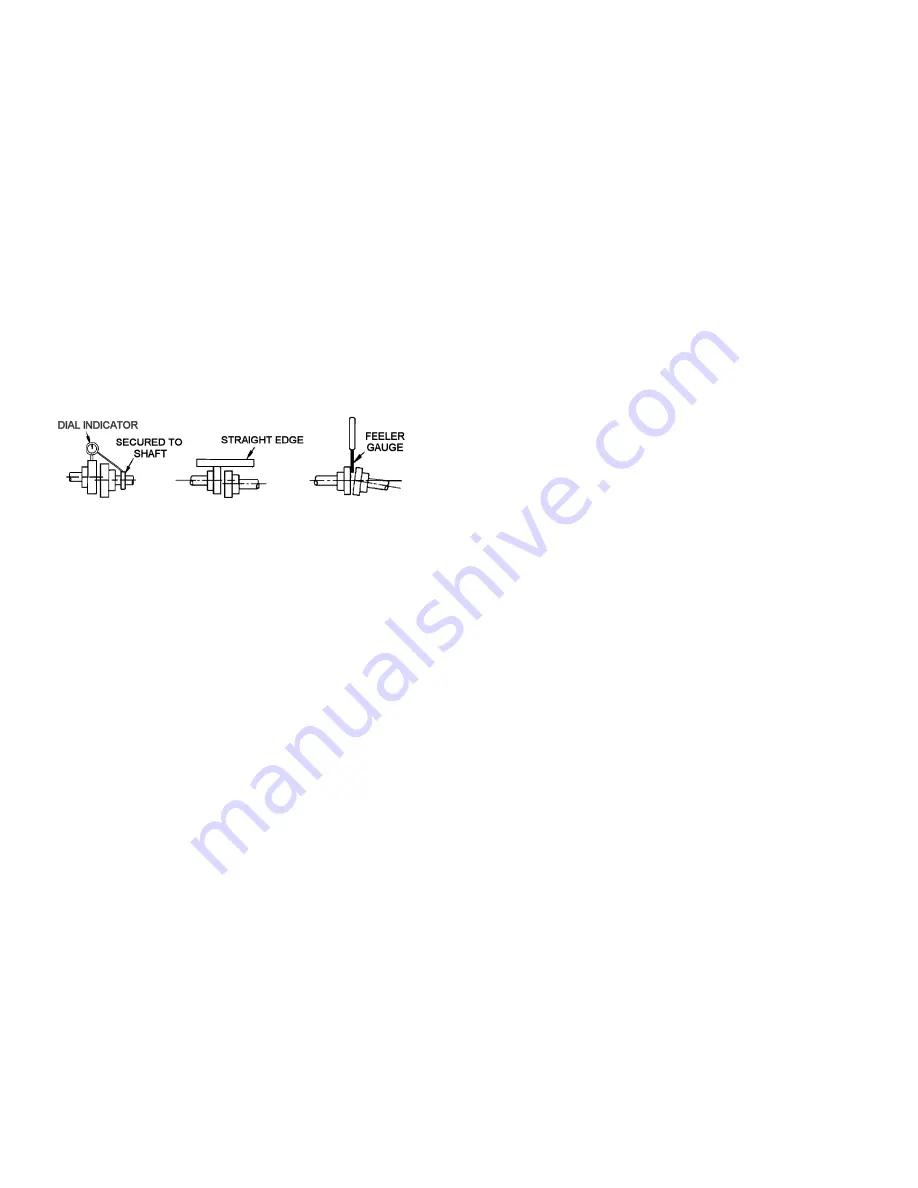
105-B00 Page 4/16
COUPLING ALIGNMENT – LONG
COUPLED
The pump must be directly coupled to a gear and/or driver
with a flexible coupling. Verify coupling alignment after
installation of new or rebuilt pumps. Both angular and
parallel coupling alignment MUST be maintained between
the pump, gear, motor, etc. in accordance with
manufacturer’s instructions. See Figure 3.
1. Parallel alignment: The use of a laser alignment tool or
dial indicator is preferred. If a laser alignment tool or
dial indicator is not available, use a straightedge. Turn
both shafts by hand, checking the reading through one
complete revolution. Maximum offset should be less
than .005" (.127 mm).
2. Angular alignment: Insert a feeler gauge between the
coupling halves. Check the spacing at 90° increments
around the coupling (four checkpoints). Maximum
variation should not exceed .005" (.127 mm). Some
laser alignment tools will check angular alignment as
well.
3. Replace the coupling guards after setting alignment.
Figure 3 – Alignment Check
ALIGNMENT – FLANGE MOUNTED GEAR
REDUCER
If the unit is assembled with a Blackmer Flange Mounted Gear
Reducer, no coupling alignment is required. The motor,
gearbox, and pump are rigidly connected with bolted, flange
connections. These flanges ensure the motor shaft, gearbox
shafts, and pump shaft are aligned correctly, without the need
for manual alignment. However, due to variations in base and
foundation geometry the unit will require shimming to reduce
stress on the gearbox and pump adapter. See
PRESTART
CHECKLIST
section for details.
PUMP ROTATION
A right-hand pump rotates clockwise with the intake on the
right side, when viewed from the driven end.
A left-hand pump rotates counterclockwise with the intake on
the left side, when viewed from the driven end.
TO REVERSE PUMP ROTATION
To reverse rotation, the pump must be disassembled then
reassembled with the shaft on the opposite side of the pump.
See the ‘Maintenance’ section for instructions.
CHECK VALVES
The use of check valves or foot valves in the supply tank is
not recommended with self-priming, positive displacement
pumps.
If the possibility of liquid backflow exists when the pump is off,
a check valve in the pump discharge piping is recommended
because the pump can motor in the reverse rotation and
create undue stress on all attached components. Never start
a pump when it is rotating in the reverse rotation as the added
starting torque can damage the pump and related equipment.


































